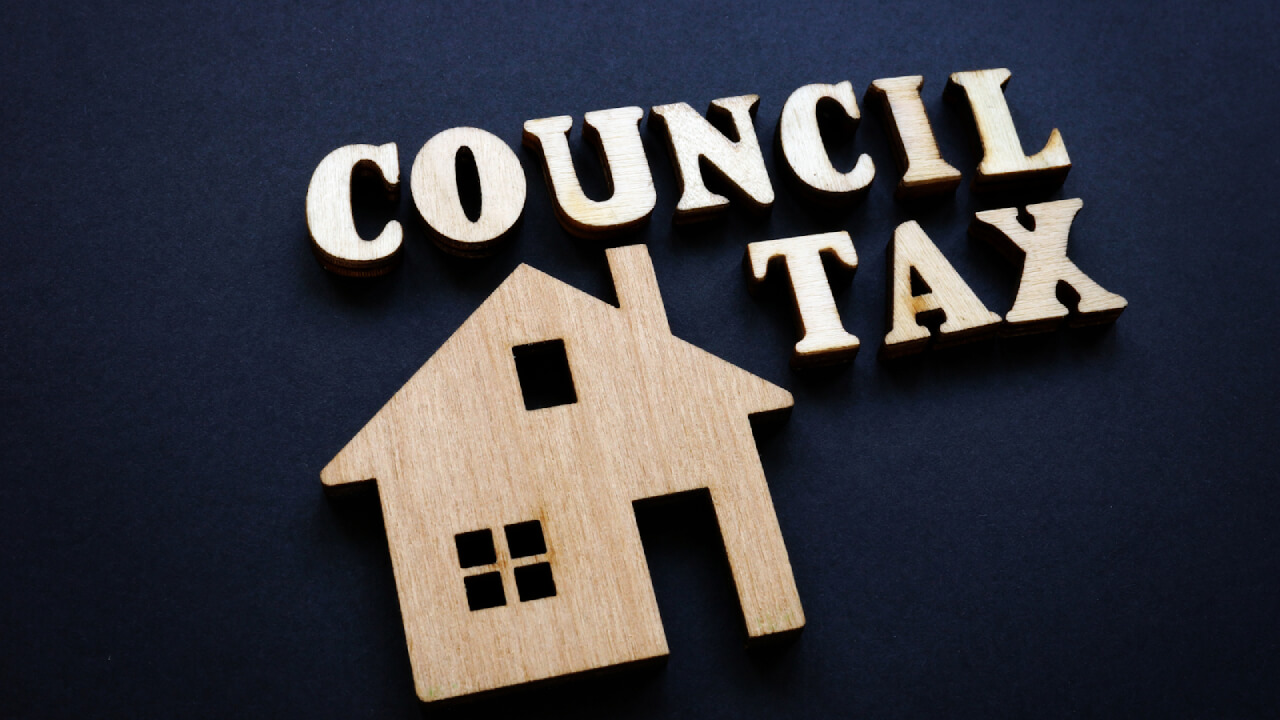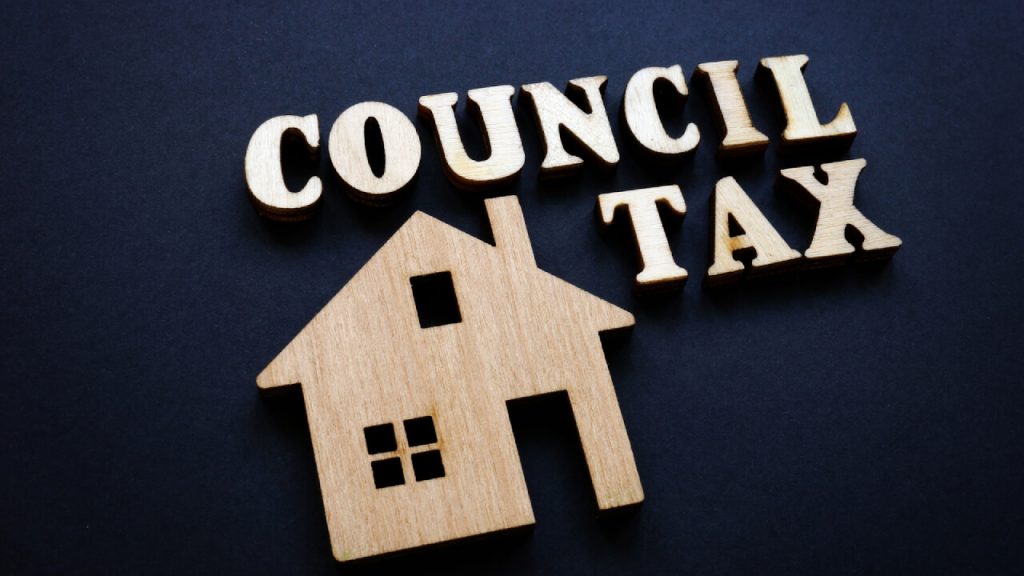
Industry insights
Do Landlords Pay Council Tax When Property is Empty – Parkgate’s Complete Guide
Are you a landlord wondering about council tax obligations for empty properties? Understanding these rules is crucial, especially with significant changes introduced in 2024 and 2025 that have made empty properties more expensive.

This comprehensive guide covers all current regulations, including the new one-year premium threshold and second homes charges introduced in 2025.
What Is Council Tax?
Council tax is a local charge set by your local authority to fund public services like waste collection, policing, schools and road maintenance. Every residential property in the UK is placed in a valuation band (A to H) that determines the council tax bill amount.
Who Is Responsible for Paying Council Tax?
Typically, the person living in the property pays council tax – usually the tenant in a rented property. However, when a property becomes empty, the responsibility shifts to the property owner.
Do Landlords Pay Council Tax When Property Is Empty?
Yes. Landlords are liable for council tax when a property is empty, unless specific exemptions apply. This liability begins immediately when a tenancy ends and no new tenant moves in.
When Is a Landlord Liable for Council Tax?
You become liable when:
- The tenancy ends, and the property becomes unoccupied
- The property is unfurnished and unlet
- You’re between tenants
- The property is undergoing repairs (unless specifically exempted)
- There’s a gap between tenancies
Current Empty Property Premium Charges (2025)
Critical Update: The rules changed significantly in 2024 under the Levelling-up and Regeneration Act 2023. Properties now face premium charges much sooner:
| Empty Duration | Total Council Tax Rate | Effective From |
| Up to 1 year | 100% (standard rate) | Immediate |
| 1+ years | 200% (double normal rate) | April 2024 |
| 5+ years | 300% (triple normal rate) | Ongoing |
| 10+ years | 400% (quadruple normal rate) | Ongoing |
Important: The premium period starts when the property first becomes empty, not when you purchased it. If you buy a property that’s already been empty for over a year, you’ll immediately face the premium charge.
New Second Homes Premium (From April 2025)
A major change introduced in 2025 under the Levelling-up and Regeneration Act 2023: councils can now charge an additional 100% premium on second homes, making the total council tax 200% of the standard rate.
Second homes are defined as properties that are:
- Substantially furnished
- Not anyone’s main residence
- Available for use (not permanently empty)
This premium applies immediately – there’s no waiting period like with empty properties. Councils had to decide by February 2024 whether to implement this premium from April 2025.
Council Tax Exemptions for Empty Properties
Some properties qualify for exemptions, meaning no council tax is payable:
| Class | Exemption Reason | Duration |
| Class B | Owned by a charity | Maximum 6 months |
| Class D | Owner in prison/detention | While detained |
| Class E | Owner of a care home/hospital | Indefinite |
| Class F | Owner deceased | Until probate + 6 months |
| Class G | Occupation prohibited by law | Indefinite |
| Class H | Awaiting clergy occupation | Indefinite |
| Class I | The owner moved to receive care | Indefinite |
| Class J | The owner moved to provide care | Indefinite |
| Class L | Repossessed by the mortgage lender | Until sold |
New Premium Exemptions (From April 2025)
Three new 12-month exemptions from both empty property and second home premiums:
- Probate Exception: 12 months from when probate is granted
- Major Repairs Exception: 12 months for properties undergoing structural alterations (cannot be reused until sold)
- Marketing Exception: 12 months for properties actively being marketed for sale or rent (cannot be reused until sold or let for 6+ months)
Note: These exemptions can be used consecutively and are only exempt from premiums; standard council tax may still apply.
Discounts vs. Exemptions
Reality Check: Unlike exemptions (which mean no payment), discounts are increasingly rare. Most councils now:
- Charge full council tax immediately when properties become empty
- Offer little to no discount periods (contrary to historical practices)
- Focus on premium charges rather than providing relief
- May offer brief grace periods, but these are becoming uncommon
Each council sets its own policy, so always check with your local authority, but expect to pay full council tax from day one of vacancy in most areas.
Major Repairs and Structural Changes
Important Change: Class A exemption (for major repairs) was abolished in most areas from April 2024. However, the new 12-month premium exemption may apply for structural alterations, though you’ll still pay standard council tax.
To qualify, works must be:
- Structural (not cosmetic)
- Rendering the property uninhabitable
- Supported by evidence (photos, builder correspondence, planning permissions)
Furnished vs. Unfurnished Properties
- Unfurnished properties: May qualify for exemptions or the standard empty property charges
- Furnished properties: Usually face full council tax and may be classified as second homes (facing additional premiums from 2025)
Local authorities determine what constitutes “substantially furnished.”
How to Minimise Council Tax Liability
- Keep properties occupied – Even short-term lets reduce liability
- Apply for exemptions immediately when circumstances change
- Document major renovations with evidence
- Market properties promptly to qualify for the 12-month marketing exemption
- Notify your council of any status changes within 21 days
- Consider professional property management to reduce void periods
Common Council Tax Scenarios
Scenario 1: Tenant leaves May 1st, new tenant moves in July 1st
- Landlord liable for May 1st – June 30th
- Full council tax rate (no premium as under 1 year)
Scenario 2: Property empty for 18 months
- Total council tax: 200% of the normal rate (double the standard amount)
- Premium continues until the property is occupied or furnished
Scenario 3: Second home furnished but rarely used
- From April 2025: Total council tax: 200% of the normal rate in areas where councils have implemented the second homes premium
- Check if your local council has implemented the second homes premium
How to Appeal or Apply for Exemptions
If you believe you’re incorrectly charged:
- Contact your local council immediately with supporting documentation
- Provide evidence: tenancy agreements, photos, medical certificates, probate documents
- Continue paying during any appeal process
- Appeal to the Valuation Tribunal if the council rejects your claim
Key Legal Requirements
- Notify changes within 21 days of any occupancy changes
- Maintain accurate records of tenancies, void periods, and major works
- Respond promptly to council inquiries
- Pay bills on time to avoid additional penalties
Frequently Asked Questions
Q: Can I avoid paying council tax by keeping a property furnished but empty? A: No. From 2025, this may classify your property as a second home, potentially resulting in 200% total council tax (double the normal rate) in areas where councils have implemented the second homes premium.
Q: What if I buy a property that’s already been empty for over a year? A: You immediately become liable for the premium rate – the empty period doesn’t reset with new ownership.
Q: Do all councils charge the maximum premiums? A: No, councils have discretion over premium rates up to the legal maximum. Check your local authority’s specific policies.
Q: Can I get retrospective exemptions? A: Possibly, if you can prove you were qualified for an exemption during the relevant period. Apply as soon as you become aware of your eligibility.
Q: What evidence do I need for the major repairs exemption? A: Building control approvals, planning permissions, contractor invoices, before/after photos, and evidence that the property is uninhabitable.
Important Local Variations
Council tax policies vary significantly between local authorities. Some councils:
- Charge maximum premiums immediately
- Offer local discretionary reductions
- Have different evidence requirements
- Apply different criteria for “substantially furnished”
Always check with your specific local council for their current policies and rates.
Conclusion
Landlords are liable for council tax on empty properties, with significant financial penalties for long-term vacancies. The key changes from the Levelling-up and Regeneration Act 2023 mean:
- Premiums start after just 1 year (reduced from 2 years in April 2024)
- Second homes face additional charges from April 2025 (where councils have implemented this)
- New exemptions are available, but with strict criteria and limited to premium relief
Professional property management and staying informed about local council policies are essential for minimising council tax liability while complying with legal requirements.
Council tax rules can change, and local authority policies vary. Always consult your local council or property experts for the most current information specific to your area.
GOOGLE REVIEWS
Jonathan is our managing agent, and he regularly check in to see how things are going and are quick to respond with any issues. They have also scheduled maintenance and painting for us and have made recommendations and advocated on our behalf to the landlord for additional maintenance and improvements.
We rented a property that they manage for 4 years.
Parkgate team is very professional and approachable. Way better than dealing with a big agency, they offer a more personal approach, always available and willing to solve any issues.
From the tenancy agreement to handing the property back, it has been a real pleasure working with them.
The selling process was great - we were given good feedback from the viewings and got the price we wanted within about 8 weeks.
We really have nothing but praise for Klaudia and Chris, it's been really enjoyable, easy and stress free and we will be recommending Parkgate to all our friends in the area and our building.
***** Thank you! *****






